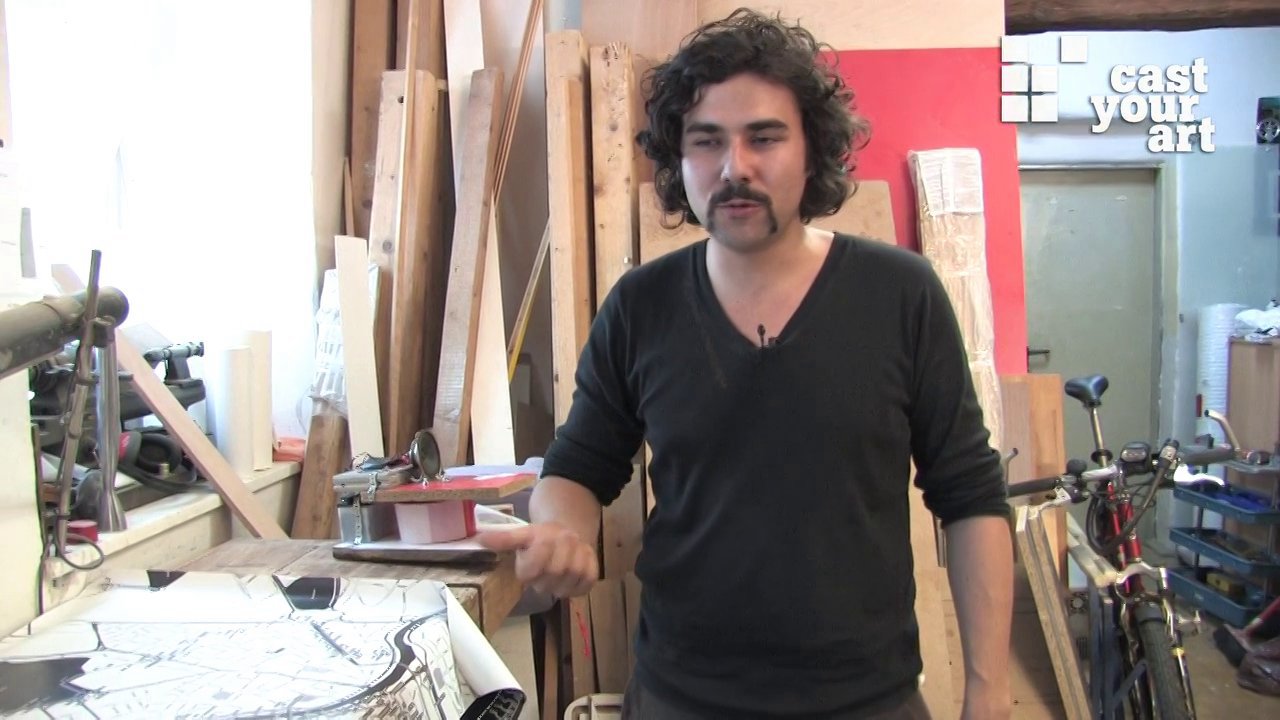Eduard Angeli - The remnants of man
Lone houses, ruins, wrecks, walls. The backyards of the hustle and bustle, the moments when the party has moved on are what attracts Angeli. The silence of his paintings touches us in our existence. A CastYourArt portrait of the painter Eduard Angeli on the occasion of his 70th birthday.
Walter Navratil, Franz Ringel, Peter Pongratz, Wolfgang Hertzig, Robert Zeppel-Sperl are the artists Eduard Angeli cites as colleagues in the academy of fine arts in Vienna. The dominant style of the late sixties was informal painting which has its origins in the Paris of the 1940ies and 50ies. Abstraction and inner impulse, the traits of this art form are also characteristic for Eduard Angeli’s painting of these days. He painted „fiercely“, influenced by the outsider art of the Art Brut artists of the psychiatric institution Gugging. Eduard Angeli gained access to this art, called condition-related art at the time, through his painter friend Walter Navratil who grew up in Gugging as the son of the psychiatrists Erna and Leo Navratil. When Angeli moved to Istanbul in 1965, he supported the artistic work of the interns in the Bakirköy-psychiatry. At the same time he disengaged himself from the figurative art as taught at Vienna’s academy and dealt with topics of Ottoman and Turkish history in his informal-style paintings.
At the beginning of the 1970ies the Turkish army overthrew the government and seized power amidst the ongoing conflict between extremists of the left and right. Eduard Angeli terminated his professorship at the academy of applied arts in Istanbul, subsequently leaving the country. As he says, at the time it became clear that the secret service started to become interested in him and it was time to get away from the growing repression.
At this time there was a turnaround in Eduard Angeli’s work. The facets which became central now remain dominant to this day. Spontaneity and abstraction lost their prominence as key elements of composition, figuration and deliberate sketching came to the fore, together with the reduction that distinguishes his work to this day: less colour, focus on composition and perspective, reduction in favour of concentration. The change is also evident on the choice of material; Eduard Angeli now used paper and often jute primed on the backside. He still painted with oil but with the colouring more reserved and using “poor” materials like charcoal and red chalk.
This reduction entailed also a transformation of the figurative elements in his work. Concrete objects are reduced to their necessities. In the course of this reduction concreteness diminishes and a kind of symbolic yet unsaid content emerges. No more is it a concrete house or horizon finding their effigies in the paintings of Angeli. What is being captured and elaborated by the perpetuation of the motifs are rather the properties of house and horizon as such. The existence of humans shifts in the course of this transformation; humans as a subject disappear entirely from his paintings. But the paintings do not simply let the human go, the human existence removed from the paintings throws the viewer back to himself. With their silence they question our existence, as Klaus Albrecht Schröder, director of the Albertina, says about Angelis works.
Lone houses, ruins, wrecks, walls. The backyards of the hustle and bustle, the moments when the party has moved on are what attracts Angeli. Since the mid-2000s he lives in Venice, the slightly overage city with its glorious days behind it, where the painter’s landscapes freeze to remnants abandoned by man. Silence as a quality of time and the accompanying melancholy fascinate him, says Angeli. This could be due to the fact that he comes from Vienna, a city that shares this destiny. (Text: Wolfgang Haas / Translation: Cem Angeli)
Das könnte Sie auch interessieren

DEATH AND THE MAIDEN. Young Ukrainian art at the Bank Austria Kunstforum Wien
11. November 2022
PETER PONGRATZ. Feine Salonkunst für das bürgerliche Wohnzimmer.
10. October 2021
Gordan Savicic - Lat 54.136696 Long 13.771362
11. September 2008
CLAUDE MONET. Der Seerosenteich
24. May 2016
ANJA MANFREDI. Atlas
4. May 2023
Basquiat Warhol - Psychophysical Dialogues
17. October 2013
JIM DINE. Selbstporträts
5. July 2016
